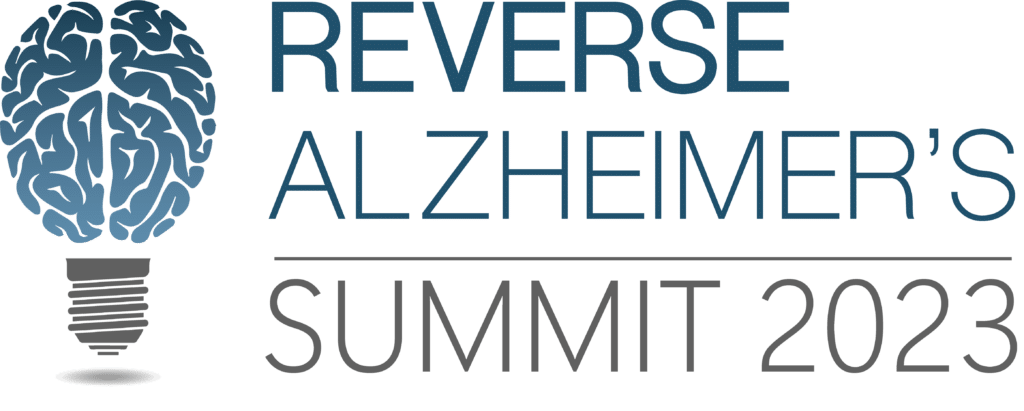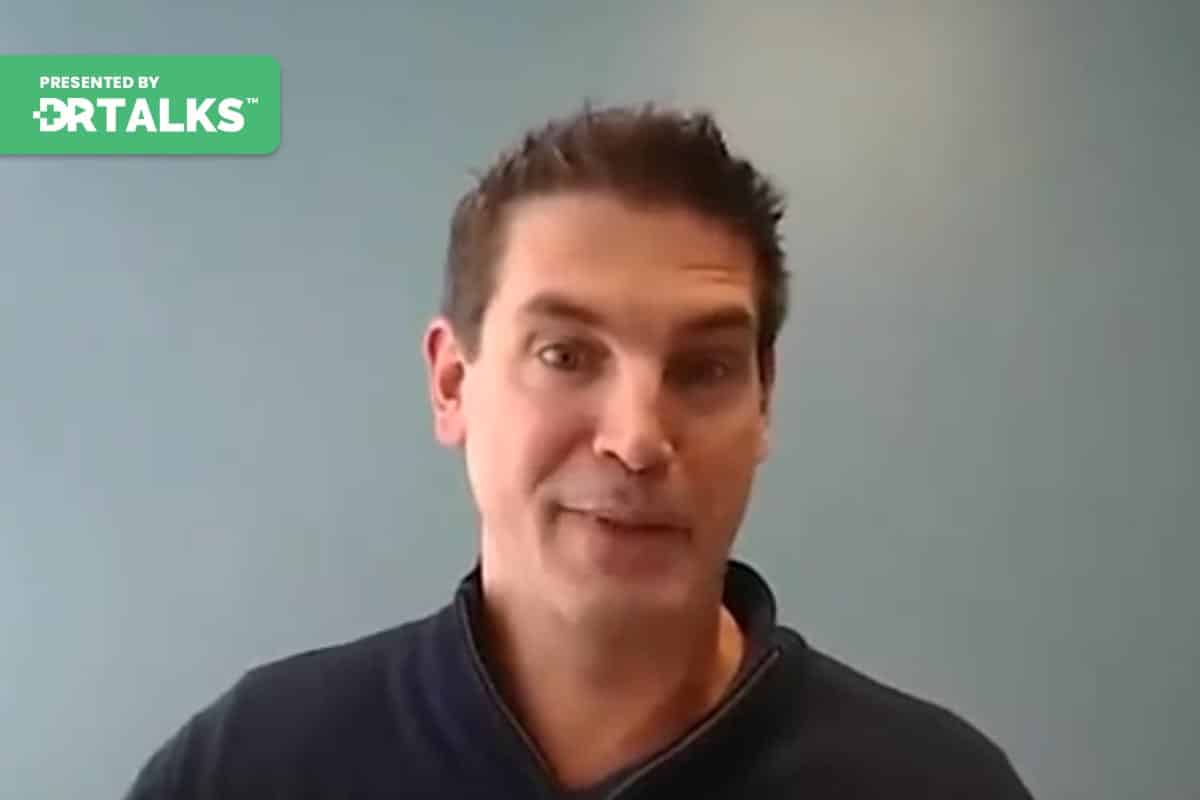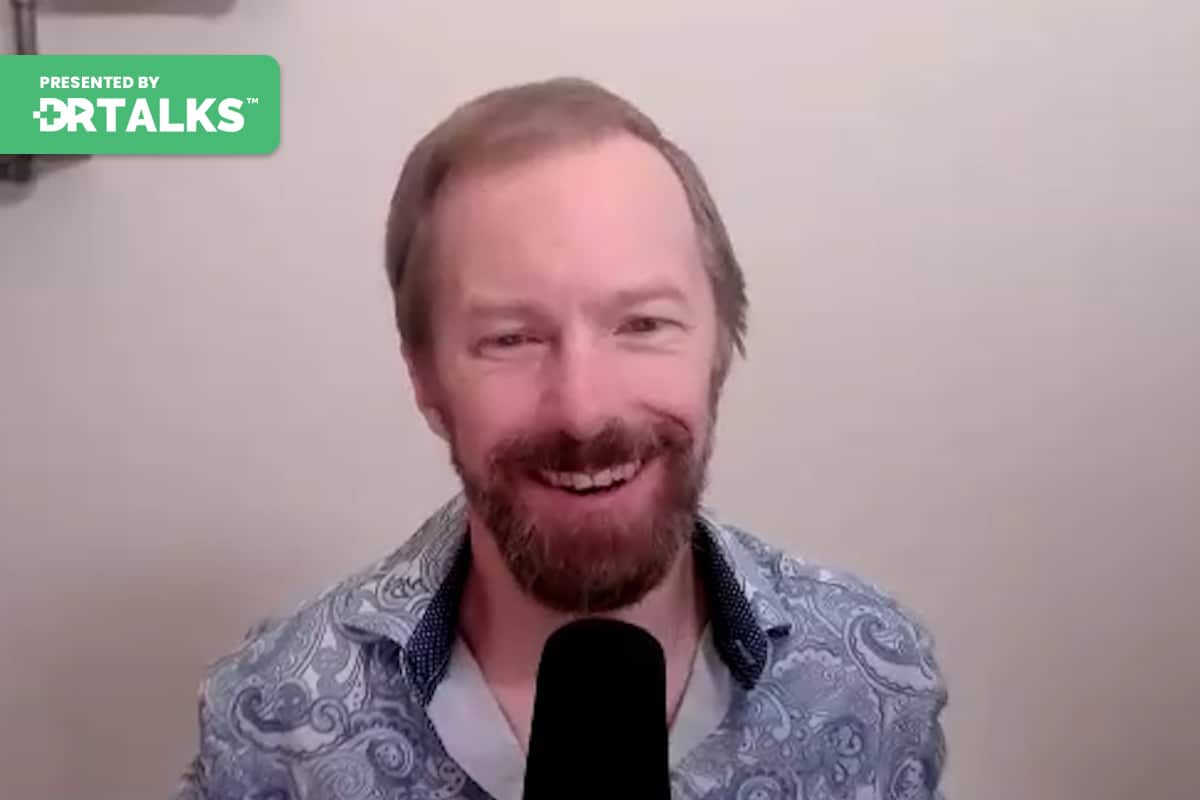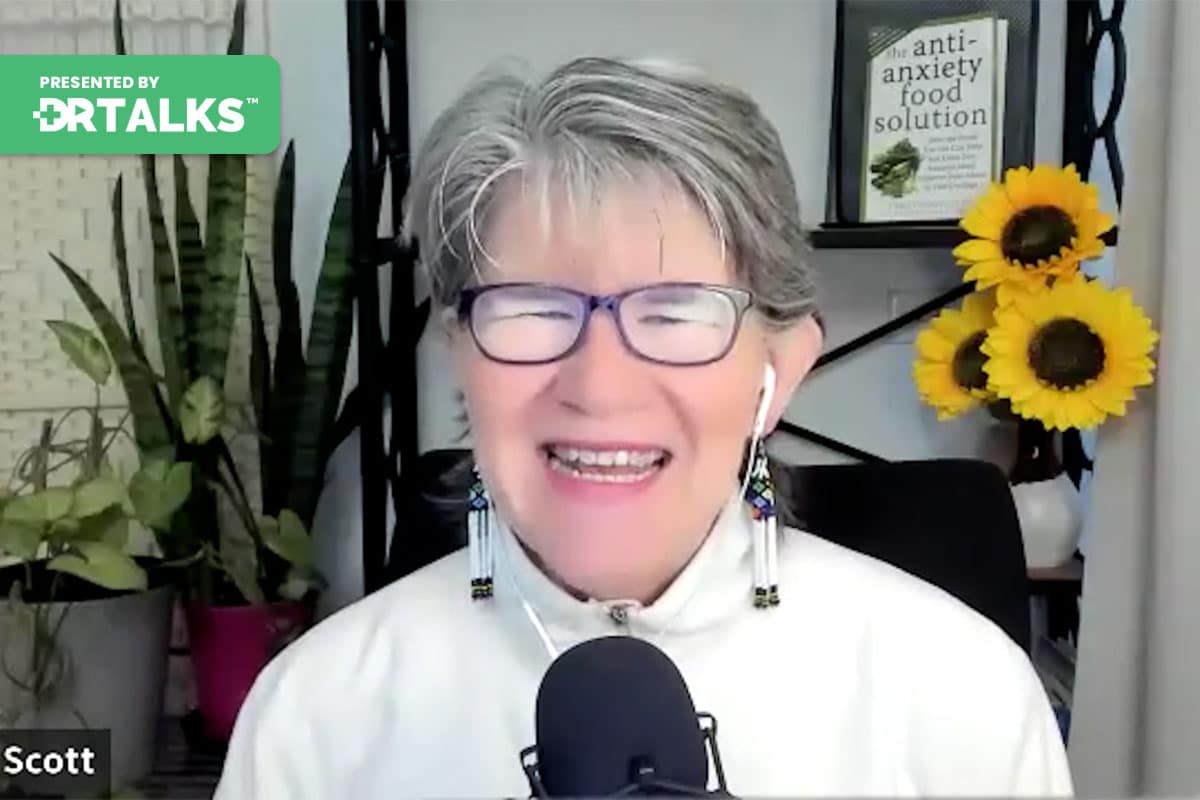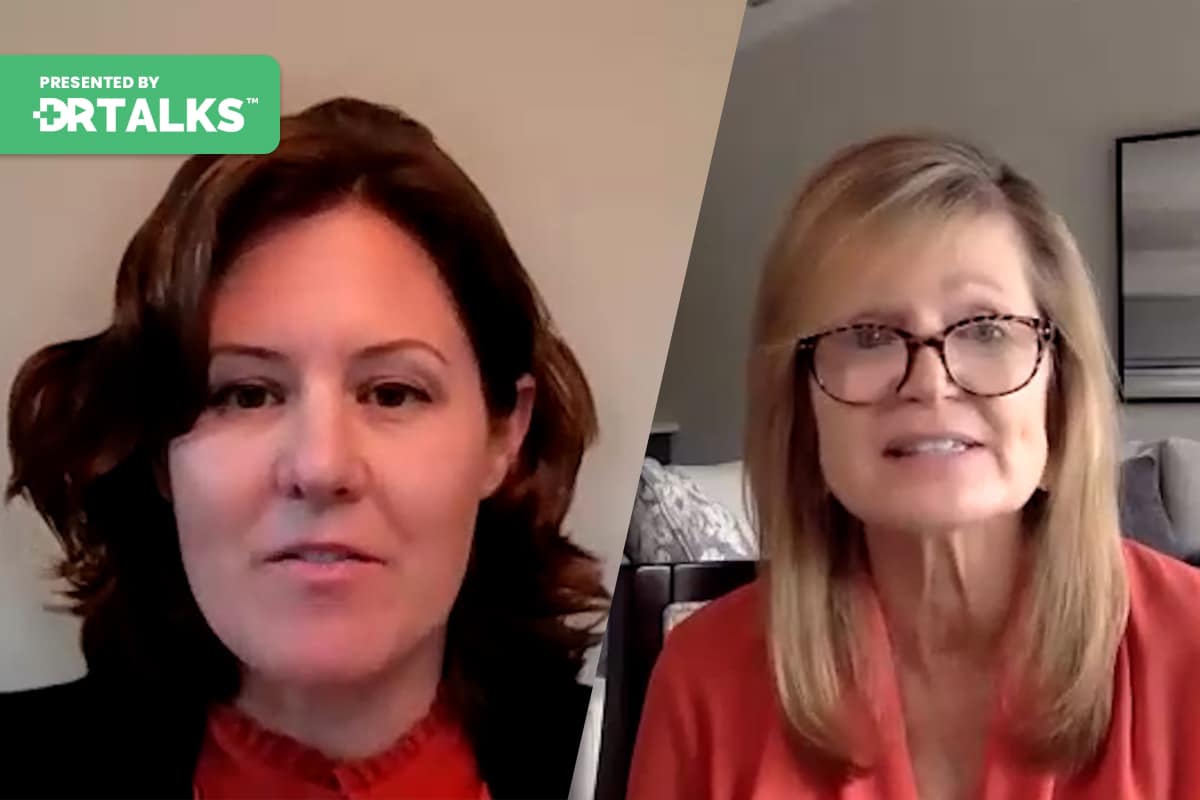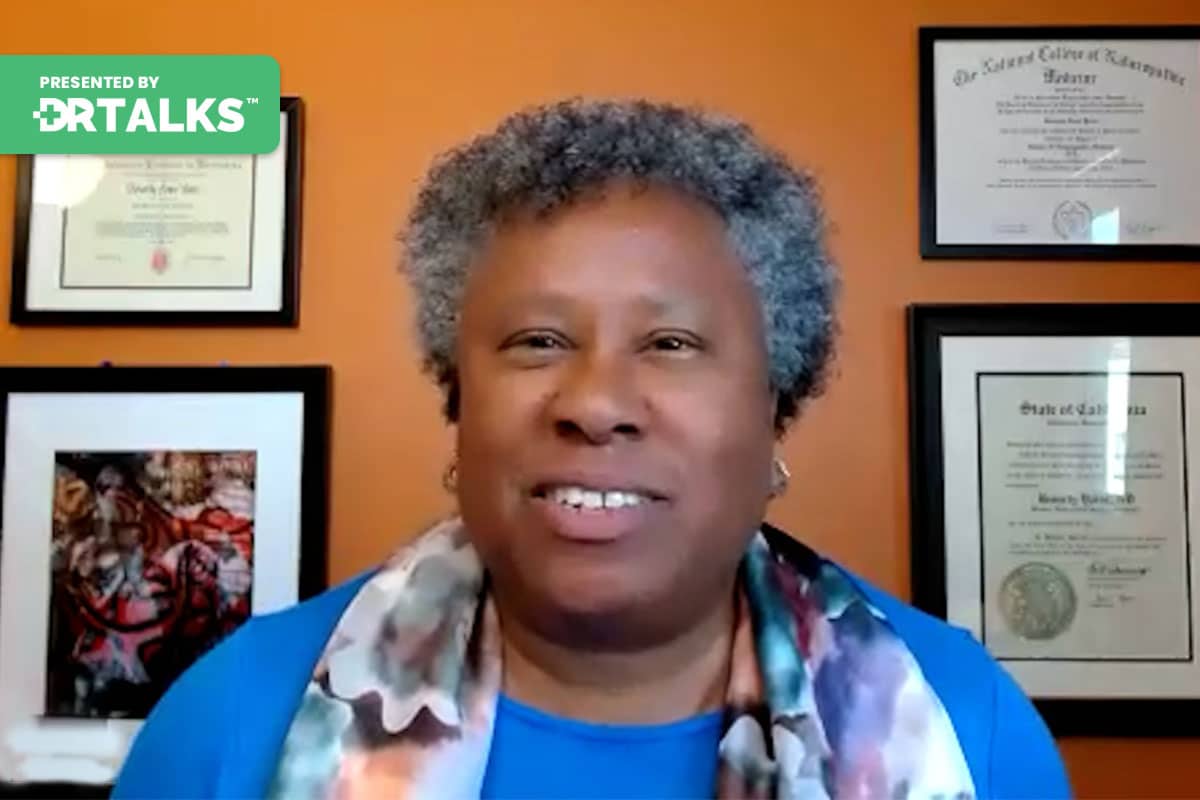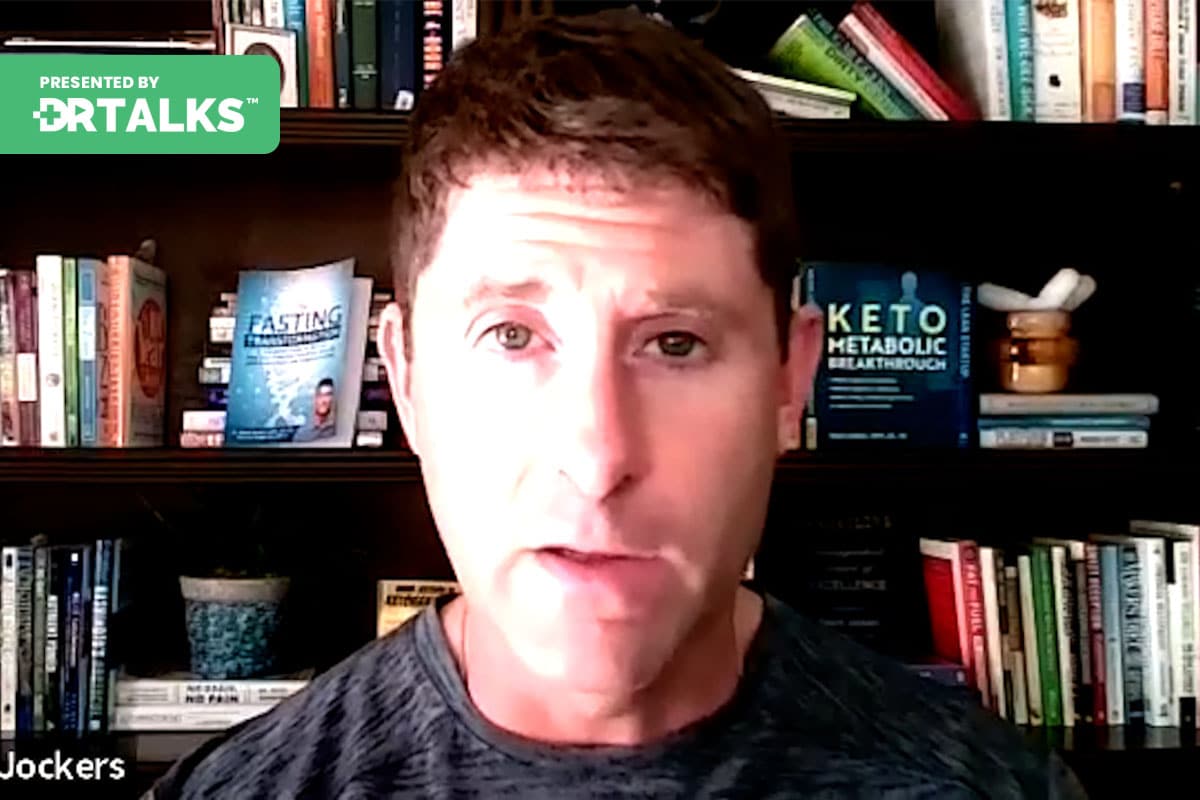Join the discussion below

Dr. Heather Sandison is the founder of Solcere Health Clinic and Marama, the first residential care facility for the elderly of its kind. At Solcere, Dr. Sandison and her team of doctors and health coaches focus primarily on supporting patients looking to optimize cognitive function, prevent mental decline, and reverse... Read More
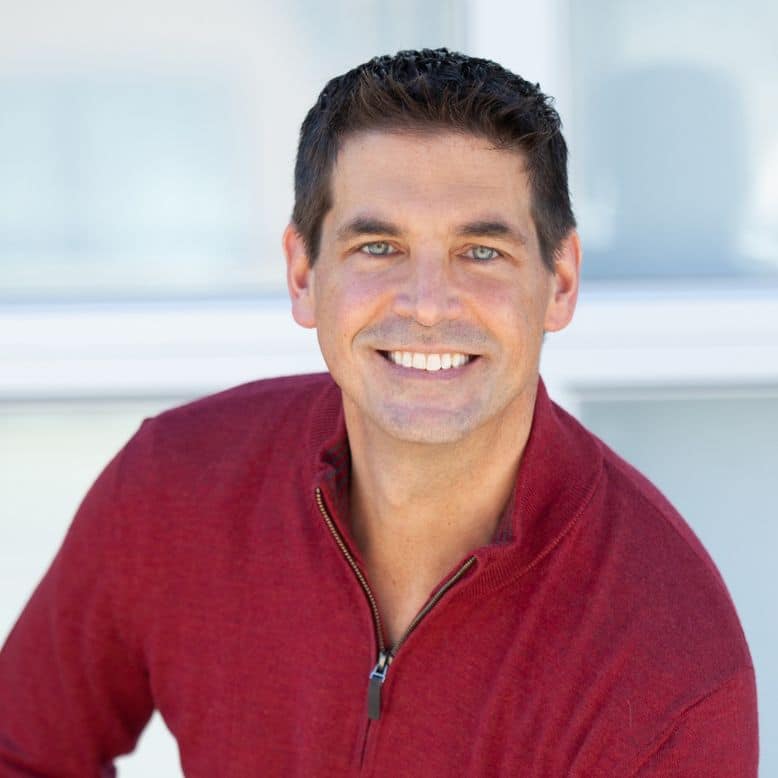
Dr. Dan (as most of his patients refer to him) is a Board Certified Family Medicine Physician and a Certified Functional Medicine Practitioner through the Institute for Functional Medicine. He is also a ReCODE 2.0 provider with Apollo Health. He has a passion for working collaboratively with his patients and... Read More
Dr. Daniel LaPerriere describes the endothelium and why is it important for brain health. He discusses the functions endothelial cells perform and their importance.
- Discover how physicians assess your endothelial health
- Learn lifestyle interventions you can use to improve the health of your endothelial cells
- Learn about supplements and medications that improve the health of endothelial cells
Heather Sandison, ND
Welcome to this episode of the Reverse Alzheimer’s Summit. I’m your host, Dr. Heather Sandison. I’m delighted to introduce you today to Dr. Dan. He is a board-certified family medicine physician and also a certified functional medicine practitioner through the Institute for Functional Medicine. He has also trained with Dr. Bredesen and is a ReCODE 2.0 provider with Apollo Health. I invited him on the show today because he had some amazing results with his dementia patients, and I want him to share them with you. So you are not just hearing it from me. I want him to share with you some of those stories and his approach to getting the most out of Dr. Bredesen’s protocol in functional medicine in general. Welcome, Dr. Dan.
Daniel LaPerriere
Thanks, Heather. Thanks for having me. Glad to be here.
Heather Sandison, ND
So tell me about your kind of segway into this world. How did you go from M.D. trained to becoming an Apollo-certified practitioner helping people with dementia?
Daniel LaPerriere
Yeah. So my path to finding functional medicine may be different than some others. I was trained as an allopathic physician and went to a regular Western medical school and was practicing in a rural clinic in rural Colorado, doing full-spectrum family medicine. And was just becoming exceedingly frustrated that I was not really helping a lot of people. I was having really short visits, pushed to see more people, had 15-minute visits with individuals, and was just prescribing medications and realizing I was treating symptoms but not really getting to the root cause of the disease process. But I was never really taught about that. Like, how do I address the root cause of the disease process? And I remember it was actually through a GI conference that is where I got started. I had a bunch of people who were seeing me with irritable bowel syndrome problems, and these gut problems and they had seen GI, and they had seen me. And they were just on kind of medicines to stop their diarrhea, and there is got to be more. And I came across the IFM GI conference. And I went there and it was just eye-opening. And I just thought, wow, this is a whole different approach to medicine and really the way it should be done. So that was my introduction to the functional medicine world. And there I just started doing one or two of their conferences each year and trying to incorporate it into my practice as much as I could. But then of course, in a practice where I only had 10 or 15 minutes with people, it is really hard to do that. So I branched off on my own and went to work at a concierge practice where I have more time with people and where I got to really use functional medicine more. Now I have my own functional medicine practice where it began as a general functional medicine practice taking care of all different types of problems, and I still do to some extent but at this point, really 90% of the work I do is in the realm of working with people with dementia. Either, who are suffering from dementia or have a strong family history and want to prevent dementia. And that is the work I love doing now the most.
Heather Sandison, ND
Me too. So thank you for joining us to share that story. I think all doctors, we get into this because we want to help. And many people share that experience, and many doctors share that experience of the conventional medical system and patients too, of it being so dissatisfying to only have those 15 minutes together, and sometimes it is seven minutes. It is such a short interaction and really the tool belt is so limited. And in the case of dementia quite frankly like just depressing. How little there is to offer from the conventional perspective despite the billions and billions of dollars that have been spent and the countless hours of smart people’s time to find a solution for this. And yet here we are sitting on this side, having been trained by Dr. Bredesen, getting the benefits of functional medicine. I think probably both personally and also seeing just how satisfying it is to deliver in clinical practice and wanting to get even more people access to this because it works. So can you describe, like a patient or two who you have seen benefit from this approach with dementia?
Daniel LaPerriere
Yeah, definitely. So I have been working with individuals with different iterations of the Bredesen Recode protocol over the past seven or eight years now. And it is amazing that still our knowledge continues to grow and with the different interventions that we have and things we can do with people, we continue to learn more, which is really great. But earlier on I can recall a gentleman in his mid-seventies who came to see me with his wife and he was having such a degree of problems that he had to stop working. They had done a lot of work where they went out and went to different fairs and sold things.
And so he would staff one of these booths where they would sell objects and he would explain what they were selling and collect money and give change, and he was unable to do any of that. And we are doing some of the root cause analysis, we found that there was some underlying inflammation and diabetes that he had as the underlying root cause of this. And with him taking the steps that he needed to do to correct some of his diet and diabetes., and addressing some of these underlying inflammation processes. It was pretty amazing that six months later they came back and saw me. We, of course, communicated in between that time but he came back and saw me and his wife was like, he was giving correct change at the last fair that we went to and talking with people when he was withdrawn and not wanting to interact with people.
And that was one of my earlier experiences where I was like, wow, this was somebody who I did not do a ton of things with and I saw this amazing response. I have worked with many patients since and not everybody gets that great response in six months’ time but that was really great eye-opening. That always strikes me as one of my first big successes several years ago. And then I have where I was just before getting on with you today. I was just on with the client I started working with just a month ago. She is in her mid-seventies and has a MoCA score of around 20, 21, and has been having cognitive problems that have been worsening over the past couple of years and not really, having found anything that was helping her discover Dr. Bredesen Center by reading his book, well, her husband did and came to me so already she is doing great.
They are really motivated to get into ketosis, address some inflammatory issues again, and started her on some hormone replacement therapy, and some different nutraceuticals that she is on. And this was our sixth-week follow up and already they were telling me today that she is repeating herself less, and that her memory seems to be a fair amount better. She still has short-term memory problems but already noticing in that short time some improvements. So those are the things that give me so much joy, to experience those sorts of stories with people.
Heather Sandison, ND
I’m sitting here just doing like a little happy wiggle because this is why I dedicated my career to this approach and to getting people access to this medicine because I saw the same thing you were. And it is so fun when I do not feel like I’m the weird one, like sitting here in San Diego, the only person seeing these results. To hear that you are experiencing it too is just giving me even more energy to get this information out, to share with people what is possible for those suffering from Alzheimer’s. And you were mentioning people that are fairly advanced, not severe dementia but it is affecting their daily life. They are repeating themselves, they are unable to calculate change, and they get that back. Now, imagine if it is those very first indications when people notice that their brain is not working the way it was five years ago or 10 years ago, or the first time they start repeating questions. If we could intervene then, it is so much less effort, so much less work.
Daniel LaPerriere
I get so excited when I get those patients who contact me because unfortunately, I do have a lot of patients who contact me, who come to me and they have pretty advanced dementia. And for them, it gets to be so much more difficult. And part of that is because the work to employ the Bredensen protocol and the ReCode protocol takes a lot of lifestyle changes and motivation. And so it is hard if you do not have the wherewithal, the recognition to be able to do that. Then oftentimes it is the loved ones who feel like they are forcing this program and protocol on somebody, and it can be the cause of conflict in the family. Which is why Marama was wonderful. People can come there and do that. But in a home situation, that could be extremely difficult. So for those people, it can be a struggle and I would say that my experience with a lot of people who do have moderately advanced dementia, even despite those challenges. My experience overall is that we at least stabilized their dementia and they are able to stay home. Which I take as a win, even in itself. The fact that I have worked with somebody for four years and they came to see me with a MoCA score of 12, and four years later there is still like a 12 or 13, and being able to live at home and still be able to recognize their family and interact with their family because typically you would see a loss of one and a half to two points each year. And at that point in time, somebody would maybe need to be in a nursing home facility. So even that is so powerful and it is sometimes hard to make people realize that when they are like, we have been doing this for four years now and we are not improving. But to really say, what you have seen is really great still.
Heather Sandison, ND
Well, do not tell anybody, like do not tell my investors this, but Marama, my goal is to put it out of business. If we could prevent people from ever needing memory care that would be success. And I get that that is not a short-term goal. That is a long-term goal. This is going to happen with people who are in their forties and fifties now that they never get dementia. If everyone can hear the stories from your clinic if everyone can know that there are options and there is an overwhelming amount of things that we can do to prevent and even reverse cognitive decline, then we can do this, we can turn the tide of this epidemic. And people would not need to go down that path of moving to memory care. No one wants to leave their friends and family and loved ones and go into an institution. No one would choose that.
In fact, I think that part of why we do not talk about this much is because everyone is sort of in this like if that happens to me shoot me or we do not want to think about it. We do not want to even consider that we might become that kind of burden to our family, that we might be someone losing our dignity. And yet having this conversation since earlier on there is so much that we can do. You have mentioned inflammation and you mentioned the ketogenic diet. And I know vascular and kind of circulatory health is another passion of yours. So I want to talk about it all. I feel like I could talk to you for days. But let us dive into a little bit of like the how-to. What do you notice your patients get the most out of? If they could like, people ask me this all the time and I always kind of refuse to answer it, now I’m going to do it to you. If you could do one thing, what would you recommend your patient do?
Daniel LaPerriere
That is hard, Heather. Because I guess like everything, I would say overwhelmingly, if I could do one thing for the majority of patients I see would be dietary interventions and getting people on a lower carbohydrate, higher fat Ketoflex 12/3 diet which is not a typical ketogenic diet, but a diet where you are getting a lot of phytonutrients from vegetables, healthy fats, healthy proteins from grass-fed animals. Now, I have a lot of clients who come to me who are actually already doing that. And so for those people, I may choose something different. And if I have someone who is diabetic, then that would by far be the first thing that I think we need to do. But I have some clients who come to me whose blood sugars are great but they actually are overwhelmed by toxic exposures. They have grown up on a farm in rural Colorado where they sprayed pesticides all the time and they have higher organophosphate levels or we have mold toxicities. And so for those people, it is different. Of course, it is an individualized approach that we use, but I think dietary interventions are definitely up there as number one that we need to be looking at for people. I have a passion for a lot of functional medicine. But I have a passion for vascular health and cardiovascular health, and brain health. And I think they are really just intertwined together.
So what I love about it is I could take the ReCODE program, The Doctor Bredesen protocol and I could pretty much use it on patients coming to see me for concerns about cardiovascular health and having a severe family history of cardiovascular disease or having personal heart attacks and stents. And I could pretty much use that protocol because it is a great functional medical protocol to heal the body. And when you heal the brain, you are pretty much healing the vascular system too and that is what is great about functional medicine. If we are really doing a good job at addressing all of these symptoms, these systems together. Then we are optimizing health for the brain, for the heart, for the blood vessels, and for all of our organs to function optimally.
So that said, there are some nuances and different things that we can look at and do in between. So I do for many of my cognitive clients who I’m seeing, we do explore this vascular area which is one of these subtypes of Alzheimer’s disease. And so when I approach people, I am utilizing Dr. Dale Bredensen’s format in the work that I do. So I am looking at people, I work very closely with Apollo Health also, where I’m able to utilize some algorithms based on labs in history to really help people find out which of the subtypes they fall into. And people probably are aware of the subtypes that we have, inflammation and glycol toxic. Where we have problems caused by increased blood sugar. We have this area of trophic loss where we do not have enough vitamins, nutrients, and hormones. We have toxicity. We have vasculature and then we have trauma.
So those are our different areas. We were able to break down people into those categories. And so that is where your question you asked me about the one thing I would do, part of it really depends on what is the biggest player in a given person. But definitely, diet goes across a lot of those boards. I mean, if you are going to affect nutrients by having a more nutritious diet, you are going to lower inflammation, you are going to lower blood sugar, you are going to lower toxins. So you are probably not going to affect brain trauma by the diet necessarily but you could.
Heather Sandison, ND
Increased fish and fish oils, right? It is so good for healing range and choline and Zirin that are in foods. I love it.
Daniel LaPerriere
Those are great for people who have a history of brain trauma as well, so definitely true. So that is the way I start working with people as I work closely with Apollo Health. We start helping to categorize people into where they fall. And really we want to address all of those issues that are there. But it does help sometimes prioritize areas of someone who is really strongly of one category versus another. The vascular area is one that I have a little underlying passion for and so there are certain things that pop up in history or on different imaging that we do, that make me want to look at that area more with people and address that a little more. And of course, vasculature is just immediately tied to brain health. Actually, if we are talking about Alzheimer’s disease, if you are looking at Pathophysiologically what is going on, one of the first things you see in early Alzheimer’s disease is dysfunction of the cerebral vascular system.
So there are actually alterations in blood flow and oxygen exchange between the vascular system and the brain tissue that is there. And for many people, who are at risk for Alzheimer’s dementia and they are having increased amyloid. We also get more amyloid deposition in that cerebrovascular area which causes issues again with the diffusion of nutrients and oxygen to brain tissue and also affects the leakage of blood, the risk for bleeding, and the blood-brain barrier integrity. So blood-brain barrier which we talk about, is really made up of endothelial cells. So I guess I should say what an endothelial cell is. So endothelial cells are the cells that line all of the blood vessels and lymphatic vessels in our body. And if we think about it it is pretty amazing. If you opened up all of our blood vessels and laid them out, they say it would cover about four to five tennis courts in size.
So there is a vast amount of these endothelial cells in our body. There is one cell layer thick and they have lots of activity in our body. So they are not just a tube that carries blood flow through, but they are biochemically active. So they do form this barrier but that barrier prevents things like bacteria and viruses from leaving our blood system and getting into our organs. It has anti-adhesive properties that prevent platelets and things from grabbing onto the walls of our arteries and start causing blockages. They have anti-inflammatory chemicals inside of them that prevent inflammation and oxidative stress, the things like cholesterols that start building up plaques and causing heart disease. They make chemicals like nitrous oxide that lesser blood vessels dilate. So these are really biochemically active. And if we are looking at what the root cause of heart disease is it is really a dysfunction of these endothelial cells as they are not doing their job properly, then we start becoming at risk of developing plaques in our arteries.
Heather Sandison, ND
I’m going to have you keep going because this is so important. And I think what you illustrated previously in terms of using Apollo in creating this understanding of your subtype is that this is a precision medicine approach, right? You can have people who have memory loss and there are six million Americans who have been diagnosed with Alzheimer’s and one in three Americans suffers from some sort of cognitive impairment or brain fog or feeling like their brain is not working optimally. This is a massive number of people in our population and they arrive at that moment of recognizing that there is some sort of brain issue happening in very different, going down very different pathways. And the pathways that you describe, like the trophic pathway of low signaling, whether it is BDNF, brain dry neurotrophic factor or estrogen or testosterone or whatever this vitamin D, thyroid, whatever the signaling hormone is, that can be low. Nutrients can be off. There can be too much sugar, there can be too little B-12 or vitamin C. We can have all of these different pathways that get us there and we do not all travel the same path. Some people had traumatic brain injuries from playing football.
Some people have never hit their heads once, but they arrive at the same symptom picture. And so taking the time to figure out how they got there and then also understanding that they are not mutually exclusive, right? You can have a bad diet and have traumatic brain injuries. And then taking that time to figure out what pathways you took to arrive at that conclusion, and hopefully, not the conclusion, at that location on the path is really important because that is how we get back. That is how we unwind this dysfunctional process. And you are an expert really in this piece around blood vessels and that is the piece that you are especially passionate about. And I think you have also done a really great job explaining why that is so important. Our blood is what delivers those hormones, those nutrients to our brain, everything that we need. And it is also what takes it away.
All of the toxins that need to be taken out they are going to leave through that vascular system. So if it is not working, our brain is not going to work. Okay. So I just had to like double-click on all that you just said because it was so important. And so these endothelial cells, they are the ones that are there like you describe that plumbing. It is not that they are just plumbing, there is a lot more to it than that. It is complex and this shows up for vascular dementia, for heart disease, for Alzheimer’s, for all of it. Okay. So let us keep going. What I’m wondering now is as you are describing this, I’m like, are mine, okay? How do I test them? Are they doing alright?
Daniel LaPerriere
Yeah, that is a great question. And there are some tests to look at the health of your endothelial cells but none of them are perfect. So there are a variety of things that are out there but our endothelial function is very sensitive to small things like stress. And this is why I’m going to get right back to this topic the lifestyle applications that we look at. We are looking at diet, exercise, stress, and sleep. They are key because all of those intimately relate to the health of our brain but also to the health of our blood vessel cells. All of those affect your endothelial function such that if I’m doing an endothelial function test on you. So some of them are things one is called. Should I name a different one in particular?
Heather Sandison, ND
Totally, yeah. Go for it. I like practical. I want people to be able to like name it.
Daniel LaPerriere
So one is called Endopat and these are available everywhere but Endopat and another one is Vendys. These are similar types of tests that technology is a little different in how they assess it but basically, we are assessing the ability of blood vessel, blood vessel cells to generate nitrous oxide and fill back up distal tissues with oxygen after you occlude blood flow to the arm. So typically you are including blood flow to the arm that is decreasing the blood flow to the extremity. And then you release it and then you are measuring either temperature or pulsatile in the fingertips to determine the rapidity of restoration of that blood flow. And that is a reflection of your endothelial cell health. So those are two that work in that sort of a mechanism. But to do that test you need to be able to do it reproducibly where you have a consistent temperature. Where someone is coming in without drinking coffee or being stressed on the drive there because somebody cut them off.
You had an environment that is quiet because it is something that drops or bangs in the middle of it. Then that new amount of stress and just adrenergic tone where you are releasing epinephrine or something will set off your endothelial cells and actually alter your endothelial function. So while these are wonderful tests, there are others also that can look at the elasticity of blood vessels sort of based on evaluation of pulse wave analysis. Another really neat thing that we have learned about endothelial health is that above these endothelial cells, we actually have this thin layer called the glycocalyx. Which is basically like a Teflon lining that covers our endothelial cells. Which is extremely important to the health of the endothelial cells and is something else that can degrade as we get older, but also rapidly degrade to inflammatory stress like you ate a really bad food with lots of french fries or bad oils that will degrade your are like glycocalyx layer rapidly. And that glycocalyx coating our endothelial cells basically makes it such that say you have an inflamed cholesterol molecule that may have gotten down into that endothelial layer and made a plaque bigger. Now it is going to bounce off and just kind of reflect on that and not cause that plaque to not happen
So, this glycocalyx is actually something else that we can image now. There is something called a cyclical regular check but it is like this micro camera under your tongue where you can actually see these little blood vessels. You can see the little lining of the glycocalyx covering the blood vessel wall and it is pretty amazing. Now you can measure the thickness of it. and that is supposed to give you some assessment of how healthy you like your glycocalyx is. But this is something that there have been some new supplements and they are made from a special seaweed. And this green seaweed actually has been found to really help replenish that glycocalyx lining. And they have some really neat results on this where we see regression in plaques and arteries and soft plaques like carotid arteries of people and some reversal of vascular disease, which was really important for our brain health, too.
Heather Sandison, ND
So I know people are going to be asking what’s the seaweed product? We can on this summit? We can share nobody is paying us.
Daniel LaPerriere
Yeah. So so our Tyrus cell is the name of the brand name of the specialized supplement that has that seaweed product in it that can help restore your glycol, Calyx.
Heather Sandison, ND
And the integrity of your blood vessels, it sounds like.
Daniel LaPerriere
Yeah, it helps. I mean, it helps protect that layer. So that way, no, I mean, there are a lot more other things we get into blood pressure and sleep apnea and all these other things that affect our blood vessels, health as well. But if we have an intact glycocalyx is another layer of armor over the blood vessel that helps protect it. Then it is, you know, something that is easy to do. I mean, all of these things like lowering the inflammation in your diet and exercising, that is going to improve your glycocalyx but now we have a specialized supplement that we know can replenish it as well. And so for any client that I have who I mean, I try and recommend it to most of my clients with who I’m seeing for dementia, but especially to my clients who are seeing me for vascular disease in particular, or family history. That is a supplement that I recommend to be protective. Yeah.
Heather Sandison, ND
That is really helpful. So I think I also want to go back to what you said about using the endo pie and how the limitation was that if you were under stress, it changed your blood vessels. So this is that connection between stress and Alzheimer’s, right? This or at least one of them. So what do you recommend to your patients in terms of modulating? We need enough stress. We need to push up against our edge and cognitively exercise our muscles and everything. We do not want to just sit on the couch and not have any stress at all. But what do you recommend to your patients, your clients for modulating that stress, getting it at just the right level?
Daniel LaPerriere
Yeah, there are lots of tools that we have that we can use now, which is exciting. And people have different amounts of life stress and different ways of dealing with it. And some people have a past history of having significant anxiety and some mental health issues, and others have not really experienced any of that. And I have people who I see who are pretty much like; “I have no stress at all. I do not feel stressed about it.” Like you, the family members have more stress, but they are not feeling much stress. But so you are right, Heather, that stress is something that we can use to grow and get stronger. And that is this whole concept of medical stress, like exercise, like sauna, like cold therapy. These are things that we can do and if we do them well and do not overdo them then they actually rebuild our body in a stronger state. And we grow from them. We grow more muscle, we grow better cardiovascular strength, we grow better neuronal capability and cognitive ability, but we overdo them and we suffer. And so that is the same for, you know, physiologic stress. And so a lot of this is an approach to lifestyle and learning to try and help calm and modulate your nervous system. And so I try and have all of my clients learn to part of it is sort of to recognize when maybe things are getting a little overwhelming. I could do this for myself too, but for when things are getting a little overwhelming and overly stressed and having that recognition and saying, I need to step back and take a deep breath and maybe just taking, you know, even three deep abdominal breaths is enough to really you can feel that when you get stressed and you do that, it is enough to really just sort of reset and calm the nervous system. So just part of it is developing that recognition for when is something getting to be a little too much for me. I’m revving a little high when it comes to some psychological stress.
And then after into that a little bit by taking some deep breaths and then there are a lot of different tools out there from things that like programs like Heart Math, which is a wonderful program that I utilize with some of my clients, has some really good scientific evidence to it, and pretty much it sort of is the utilization of deep breathing practice, but with some biofeedback that you can have. Where you can sort of see this state of balance that happens in your body, it is really balancing our sympathetic fight or flight nervous system with our parasympathetic rest and digest nervous system and that balance in your, life is about balance, but that balance is really important there for our nervous system.
And it is crazy how so rapidly we can set things off and our body reacts in just microseconds to do things that happen around us but we can also reset it. Stress is also the same thing as exercise. So I encourage, exercise as a key part of the recall program and we have people who are coming into it who are quite physically active and who run some each day. And we have people who are quite sedentary and do not do very much at all. And so we have to deal with increasing activity or sometimes decreasing activity. I have some clients who see me, and part of the problem is that they actually do not let themselves recover enough. And so you are actually building up increased oxidative stress and stress on the body from exercise by not letting you recover. Well, now we have some of these devices that can look at things like your heart rate variability, which is your heartbeat.
We sort of measure our heart rate and we say, my heart rate is 65 beats per minute or something, but really is not over that whole minute. Time is 61 at 60 and 65 or 67. So this variability in our baseline heart rate is actually something that is a predictor of your state of recovery. See some of the states of general health. And so some of these neat devices like the ordering, the whoop band. I mean, even different watches. Now you are able to look at these sorts of metrics and be able to use them to see is your body is in a state of recovery. Am I stressed too much?
Heather Sandison, ND
So I love it. This is super helpful. And you can see very quickly how each person is really going to need a guide through this process, particularly if they are feeling overwhelmed or if they are struggling with cognitive decline. There is a lot of kind of threads that we can pull on. You mentioned sleep apnea as something that can affect blood vessels. We also know there is a direct relationship certainly between sleep generally, but also obstructive sleep apnea and dementia. So how do you guide your patients through that if it feels like there is room for improvement with sleep?
Daniel LaPerriere
Yeah, so I actually think sleep apnea is a really underdiagnosed epidemic here. So there is I have been really surprised at over the years the number of people who say I do not snore. My partner says I do not snore. I sleep well. I feel rested when I wake up. These things that we think about that relate to somebody having sleep apnea, you look at the individual and they are not overweight. They do not have a lot of tissue around their neck. These things make us think that person may really have sleep apnea, who actually do have underlying sleep apnea, but they do not know about it. So in all of my clients, something that I do and even if they are on a CPAP is I have them use a nighttime pulse oximeter. We actually send it to them as part of the beginning of our program because I really want to get several nights of recordings. But this with this particular device, we use, there are many of them out there.
But what it does is it will actually record up to this one called the IMO 80 that we use but there are different ones but it is like a pulse ox that you would use to check your oxygen level if you were worried you were sick, like having COVID or something. You put it on your finger and you keep it on overnight. Sometimes you have to take it. If you tend to move around more and it records up to 40 hours of oxygen levels and heart rate numbers, and then it actually will download to your phone via an app and generate a pretty good sleep report where you can see, does it look like somebody is having dips in their oxygen throughout the night? That may make you suspect there is some underlying sleep disorder. Also, you can see some things with the heart rate that may be going on there. So I use that as sort of my poor man’s sleep screen on all my clients just to see, does it look like we should take a step further and do a more sophisticated sleep study to evaluate this.
Heather Sandison, ND
We use Watch Pat, which I do not know if you run into that one, but it is a watch plus a ring that you wear overnight and it gets covered by Medicare. And what I appreciated about it as a practitioner is I can kind of say just connect with watch Pat, it’ll get covered by Medicare and then magically a sleep medicine doctor or some expert in sleep medicine can read the report and get the report. And it is almost as good as an overnight hospital sleep study at this point. Technology has really come up. And so there are options, as you mentioned, very affordable options there and less cumbersome than they were even like five years ago. I was still sending people to the hospital for sleep studies. And now I think COVID really accelerated the technology so that people could get access to this kind of thing at home. I could not agree more with you that this is definitely underdiagnosed because we have these ideas in our brain about who sleep and sleep apnea, the patient is and they do not always connect. I have very thin women who have never snored, and who have sleep apnea issues. And yeah, we need to get them to help because of any amount of apnea in my mind as a brain doctor. This is mild brain damage each night. And I am not going to tolerate it. I want it. I want someone to intervene. So what do you recommend people do? Like is everybody honest, pop, or do you have other things that you recommend?
Daniel LaPerriere
Yeah, so, so I do work, so I actually will use a watch pad as well. So typically that is the next step I’ll go to if somebody knows some people right away will have enough symptoms that will qualify and I’ll just skip the oximeter and I’ll say, let’s just get a watch pad or in-home sleep study on you. That is a great way. The watch has a great company and what they do over their device has been shown to be really accurate so I love that then they get evaluated by the sleep doctor and talk about sleep, right? And so a CPAP is definitely a good device but not tolerated by everybody and is not what everybody wants to use. So what else can you do? So sometimes you can gather information from sleep studies about the position of affecting somebody’s oxygen level. And lots of times if we are sleeping on our back, it can make apnea worse than if you are sleeping on your side. And so it can be as simple and known enough to lower the amount of sleep apnea by having a pillow support you on your side.
Or they have these best they have like a tennis ball on the back. So you do not roll on your back, right? They keep you more on your side. So that is something that I have had some of my patients use before who do not tolerate a CPAP or have milder sleep apnea where maybe it is not 100%, but we want to help them some more. And we see that it was worse when they were laying on their back versus on their side. There is I mean, there is a whole get into a whole bunch of information even beyond sleep apnea about breathing and breath and all of that. The book Breath is a wonderful book. I love that book. We are just talking about the importance of breathing through our noses, right? And so and so there are some clients I have who actually have improved their apnea by doing things like chin straps or mouth taping.
And actually, now that could potentially make it worse for some people, too, if they really can not breathe through their nose. So now I’m not giving a blanket recommendation for everyone to do that right off the bat, but there are some people doing the interventions in terms of how they are breathing that can help that at night. There are dental devices that can help mobilize tissue to try and open up the airway more. But oftentimes I will work with, especially if someone has more significant sleep apnea, is working with the sleep doctor and trying to find what is going to work for that individual. And then I have some clients who still despite that, they would not really tolerate anything. And that gets to be a bit more of a challenge. And sometimes we’ll even see. Well, although it is not really fixing the apnea, sometimes I get clients by just doing nighttime oxygen and getting enough oxygen at night, you are able to sort of saturate the cells enough and prevent the lower hypoxia, which is there is still some avenues there, but it is a little better. So so try and play with what we can.
Heather Sandison, ND
Yeah, there are a lot of options. So anyone, who is I think sometimes people hear sleep apnea like, oh, I do not want to sleep CPAP. And so they are not even willing to kind of go down the path. And I want everyone to know that there are tons of options and lots of things that you can do to help optimize your sleep. And the side effects of getting more sleep not only are more energy, but better cognitive function. So I want to make sure that everyone knows where they can find out more about you. And if they want to work with you, they can get information about that. So can you share websites where what you offer, where they find you?
Daniel LaPerriere
Yeah. So the name of my practice is Colorado Functional Medicine, and the website is just sort of the acronym from there so it is www.ccfuncmed.com. And in there there is information on myself and the other members of my practice and the different ways we work with people, both for people who are having cognitive problems and those who want to prevent cognitive problems. Or if people have some specific functional medicine issue that they want to work with me on as well.
Heather Sandison, ND
So that is fantastic. Wonderful. I’m sure you are going to have lots of people knocking on your door because you are getting phenomenal results. You are clearly putting this protocol to work and it is benefiting people. So thank you so much, Doctor Dan, for the work that you are doing, your dedication to your patients, and for sharing with us your time today.
Daniel LaPerriere
Great. It was a pleasure to be here, Heather, and look forward to talking to you more in the future.
Heather Sandison, ND
Same.
Downloads
